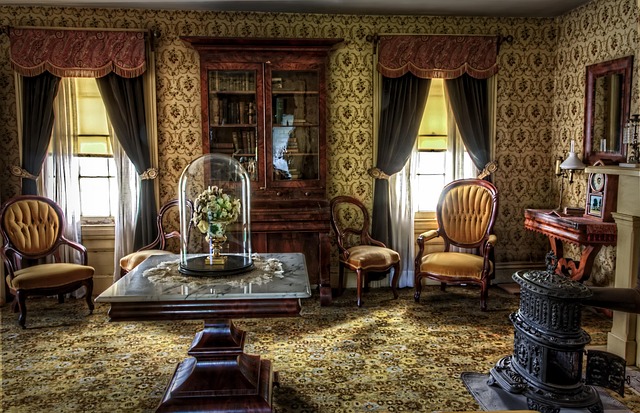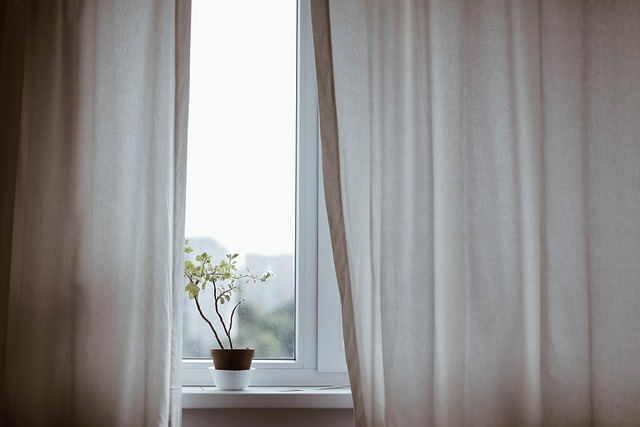In a world that is increasingly attentive to the footprints we leave behind, the intersection of interior decoration and environmental stewardship has become a fertile ground for creative expression. By thoughtfully weaving nature’s rhythms into the heart of a living space, designers and homeowners can cultivate environments that are both visually inspiring and ecologically responsible. This article explores a range of green garden ideas that breathe life into interiors while championing sustainability.
Living Walls: Vertical Gardens for Indoor Spaces
Living walls, also known as vertical gardens, are a dynamic way to infuse interior decoration with lush greenery. Instead of occupying valuable floor area, plants are mounted on walls, turning blank surfaces into living canvases. The benefits are manifold: they improve indoor air quality, provide natural insulation, and create a dramatic focal point that enhances the aesthetic appeal of any room.
- Air purification: Plants such as spider plants, snake plants, and peace lilies filter toxins and increase humidity.
- Thermal regulation: Dense foliage helps maintain steady indoor temperatures, reducing heating and cooling demands.
- Acoustic dampening: The layers of plant life absorb sound, softening the ambience of bustling homes.
Choosing the Right System
When integrating a living wall, the choice of system—hydroponic, wick, or traditional soil—plays a critical role in sustainability. Hydroponic setups rely on nutrient solutions that can be recycled, minimizing water waste. Wick systems use simple plant trays and a wick that draws water from a reservoir, offering a low-tech yet effective option for those new to indoor gardening.
“A well‑designed vertical garden can serve as a living art piece while quietly working to clean the air we breathe,” remarks Dr. Lena Ortiz, a plant ecologist.
Herb Spiral: A Compact Culinary Garden
Herb spirals combine the functionality of a kitchen garden with the elegance of a sculptural element. By arranging herbs in a conical shape, each tier receives different amounts of sunlight, creating a microclimate that nurtures a variety of plants. This design is especially suitable for apartment balconies or small kitchens, where space is at a premium.
Herb spirals are not only a source of fresh flavors but also a conversation starter in interior decoration, illustrating how food and design can coexist harmoniously.
Plant Selection and Care
Popular choices for a herb spiral include basil, thyme, oregano, mint, and rosemary. Each herb thrives in slightly different soil conditions, so layering the spiral with compost-rich, well-draining soil is essential. A drip irrigation system can be installed to ensure consistent moisture, thereby reducing water usage through precise delivery.
- Choose herbs based on culinary preference and climate suitability.
- Use recycled containers or repurposed wooden pallets to construct the spiral.
- Install a drip irrigation system with a timer to automate watering.
Reclaimed Wood Features: Sustainable Furniture and Accents
Incorporating reclaimed wood into interior decoration adds both texture and a story of renewal. Whether it is a coffee table fashioned from salvaged barn beams or a wall-mounted bookshelf carved from old pallets, each piece brings a sense of history and ecological responsibility.
Beyond its aesthetic appeal, reclaimed wood reduces demand for newly harvested timber, curbing deforestation. It also often contains natural oils that resist pests and decay, extending the lifespan of furniture without the need for chemical treatments.
Integrating Reclaimed Wood with Plant Life
Pairing reclaimed wood structures with potted plants creates a dialogue between the built environment and nature. A reclaimed wood bench accompanied by a hanging terrarium becomes a cozy reading nook that feels grounded in the earth. Additionally, placing a small table with a succulent arrangement on a reclaimed wood surface showcases the harmonious blend of design and ecology.
- Use natural wood finishes like beeswax or non-toxic oils to preserve the material.
- Combine with indoor plants that thrive in low-light conditions, such as ZZ plants or pothos.
- Position the furniture near windows to maximize natural light for both wood and plant health.
Rainwater Harvesting for Indoor Gardens
Collecting rainwater is a practical and sustainable approach to watering indoor gardens, including living walls, herb spirals, and potted plants. By installing a simple gutter system on the roof and funneling the runoff into a storage barrel, homeowners can capture a valuable resource that would otherwise go unused.
Rainwater is naturally soft, lacking the chlorine and fluoride found in tap water, making it ideal for plant health. Using rainwater also reduces the strain on municipal water supplies and can lower overall household water bills.
Designing a Rainwater Harvesting System
The first step is selecting a suitable container—glass or food-grade plastic barrels are common choices. Attach a first‑flush diverter to prevent debris from entering the reservoir. Connect the barrel to a drip irrigation system or a simple tap for easy access when watering indoor plants.
- Measure roof area to estimate potential water collection.
- Install gutters and downspouts that direct flow into the barrel.
- Use a filtration system to remove leaves and insects before water reaches the plants.
Natural Light Optimization: Light‑Sculpting Design
Maximizing natural light is a cornerstone of eco‑friendly interior decoration. Light not only enhances plant growth but also reduces the need for artificial lighting, cutting energy consumption. Thoughtful placement of windows, reflective surfaces, and strategic plant positioning can create a luminous, airy atmosphere.
For rooms with limited window exposure, consider using mirrored accents or light-colored wall paint to bounce light deeper into the space. Additionally, selecting window frames made from sustainably sourced materials contributes to overall environmental impact reduction.
Plant Placement for Light Efficiency
High‑light plants such as geraniums, philodendrons, and jade plants should be positioned near windows to thrive, while low‑light tolerant species like ferns or snake plants can be placed in corners or near interior doors. Rotating plants periodically ensures even growth and prevents overexposure on one side.
- Use plant stands that can be adjusted to align with changing sun angles.
- Incorporate a light‑filtration system for rooms with strong direct sun, protecting plants from heat stress.
- Monitor indoor humidity levels, as excessive moisture can create mold in densely planted areas.
Compost Bins for Kitchen Scraps
Turning kitchen waste into rich soil is both a sustainable practice and a boon for indoor gardens. Compost bins can be discreetly tucked into kitchen cabinets or built into the base of a dining area. The composted material can then be used as a nutrient‑rich substrate for living walls or herb spirals.
Composting reduces landfill waste and provides a free, natural fertilizer that improves plant health and soil structure.
Setting Up an Efficient Kitchen Compost System
Select a bin with a tight seal to avoid odors and pests. Alternate layers of brown (carbon) materials such as shredded newspaper with green (nitrogen) materials like fruit peels. Aerate the pile weekly to ensure oxygenation, a key factor in rapid decomposition.
- Choose a container that fits the available space and is easy to access.
- Store the bin in a cool, shaded area to speed up the composting process.
- Use the finished compost as a top dressing or mix into potting soils for indoor plants.
Biophilic Design Principles: Connecting Humans to Nature
Biophilic design emphasizes the psychological and physiological benefits of connecting interior spaces with natural elements. Integrating textures, patterns, and materials that mimic nature can reduce stress, enhance creativity, and foster a sense of well‑being. In practice, this may involve using stone‑textured tiles, wood grain finishes, or even plant‑based wall art.
By embedding these principles into interior decoration, homeowners create spaces that are not only beautiful but also nurturing.
Implementing Biophilic Elements in Small Spaces
Even modest homes can adopt biophilic strategies. A small indoor fountain can serve as a tranquil focal point, while a vertical garden brings movement and color to a narrow hallway. Using recycled glass in table tops and glass tiles that reflect natural light can subtly echo the outdoors without requiring large plant installations.
- Incorporate natural pigments or dyes in paint to create earth‑tone palettes.
- Use reclaimed bamboo flooring for a durable, renewable base.
- Opt for low‑VOC (volatile organic compound) finishes to maintain air quality.
Smart Home Integration: Monitoring Plant Health
Modern technology can augment eco‑friendly interior decoration by providing real‑time data on plant conditions. Sensors that track soil moisture, light intensity, and temperature can alert homeowners when intervention is needed, ensuring plants remain healthy while conserving resources.
When paired with smart irrigation systems, these tools create a closed‑loop system that minimizes waste and maximizes plant vitality.
Choosing the Right Smart Devices
Look for devices that use low power consumption and have robust app integration. A moisture sensor that communicates via Wi‑Fi or Bluetooth can trigger automated watering, saving water and preventing over‑watering. Combine this with a smart plug that controls a light‑spectrum grow lamp to supplement natural light during short winter days.
- Set moisture thresholds based on the specific needs of each plant species.
- Program watering schedules to match local climate and seasonal changes.
- Use data logs to analyze trends and refine plant care strategies over time.
Community Gardens and Shared Spaces
While interior decoration focuses on personal spaces, community gardens amplify the impact of green design. By establishing shared indoor gardens in apartment complexes or office buildings, residents can collaborate, exchange knowledge, and cultivate a collective sense of stewardship.
These shared spaces serve educational purposes, allowing individuals of all ages to learn about plant biology, sustainable practices, and the importance of biodiversity.
Creating a Successful Shared Indoor Garden
Start with a dedicated area that receives adequate light. Use modular planters that can be rearranged as needed. Assign rotation schedules for plant maintenance to distribute responsibility evenly among participants.
- Integrate a small compost station to recycle kitchen waste into plant nutrients.
- Offer workshops on topics like soil testing, pest management, and plant propagation.
- Encourage documentation of growth, allowing participants to track progress and celebrate successes.
Conclusion: A Holistic Vision for Green Interior Decoration
By weaving together vertical gardens, herb spirals, reclaimed wood, rainwater harvesting, smart technology, and community engagement, interior decoration transforms into a powerful tool for environmental stewardship. Each element contributes to a larger narrative of sustainability, resilience, and harmony with nature. As more homeowners adopt these practices, the cumulative effect will ripple across ecosystems, improving air quality, conserving water, and nurturing the human spirit.
Ultimately, the goal is to create interiors that feel alive—spaces where plants breathe, light dances, and the everyday becomes an opportunity to connect with the planet. In this light, green garden ideas are not merely decorative choices; they are deliberate, conscious decisions that align living spaces with the rhythms of the Earth.




